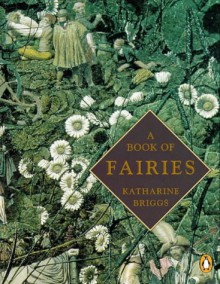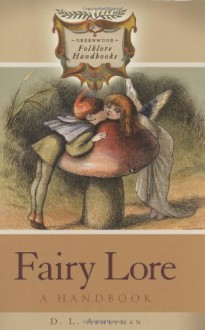
Short Summery: A delightful, if somewhat brief, compilation and introduction to the study of fairy lore by the renown folklorist Katharine M. Briggs. It is comprised of 30% short essays on the basic issues that scholars studying fairy lore often research (the origin of fairy beliefs, time in Fairyland, protection against fairy charms, Changelings, etc.) and of 70% tales, poems and recorded sightings of fairies in the British Isles from medieval times up until as recently as the late 1800s. All the material in this book is taken from Ms. Brigg's most famous work, "A Dictionary of Fairies," which provides more sightings, folk tales and MUCH more detail as well as references and a comprehensive bibliography, which this book unfortunately lacks.
Important to Keep In Mind: This is by no means a book of children's fairy tales. Don't expect to find stories about tiny, cute fairies dressed in pink tutus and tiaras that fly about waving magic wands. Unfortunately, this is how the popular culture of today's word depicts them to make them safe and fun for children. Some of the tales and sightings in this book can be dark, frightening and even tragic while only a few offer happy endings. I do not recommend this book for small children, but I believe that older children might enjoy hearing some the tales and having their socks scared off.
Katherine Briggs' work is meant for scholarly research and explores the fairy beliefs of various cultures, but mostly the UK, from ancient times up until near-present day. Unlike today's sickly sweet fairies, the fairies of these cultures varied in their physical appearences and demeanors: they could be tall and fair or diminutive and ugly. They could be kind and helpful towards mortals or bitter, jealous and mischievous. What is fascinating is that the belief in fairies in these cultures, especially in the past, was shared by both adults and children. Fairies were as real to them as the sun in the sky is real to you and me. The stories were a part of their heritage and everyday lives.
What I loved about it: The selection of tales, poems and sightings were varied and I loved that they were taken from different corners of the UK. It was interesting to note the similarities and differences in the sightings, especially. You will even find that some of the tales have similar plots to fairy tales of the Brothers Grimm! The book is perfect for people who wish to begin their journey into the scholarly study of fairy lore or anyone interested in fairies and/or folk tales in general. It is compact (about the length and width of a person's hand) and light, making it extremely portable. You could store it in a purse or even the pocket of a sweater or jacket if it is wide enough.
What I didn't like so much: As I have written above, the book lacks any references, making it difficult for the newbie student of fairy lore to continue his/her education without some (or a lot of) Internet research. I wish the section of essays contained more from the "Dictionary of Fairies" to give a little more background to the reader on the fairy behavior and taboos. I would have like to see more illustrations taken from the Dictionary to embellish some of the tales and poems.
Overall Verdict: Although I enjoyed it, It was merely an okay introduction to the study of fairy lore, especially for the absolute beginner student. It is definitely a good place to start. You can find used copies on amazon, ebay, abe books, biblio, and other similar websites for acceptable prices. I would have given it 4 stars had it not been for the cons listed above. I recommend purchasing the Dictionary of Fairies if you are looking for more information and references.

 Log in with Facebook
Log in with Facebook 







